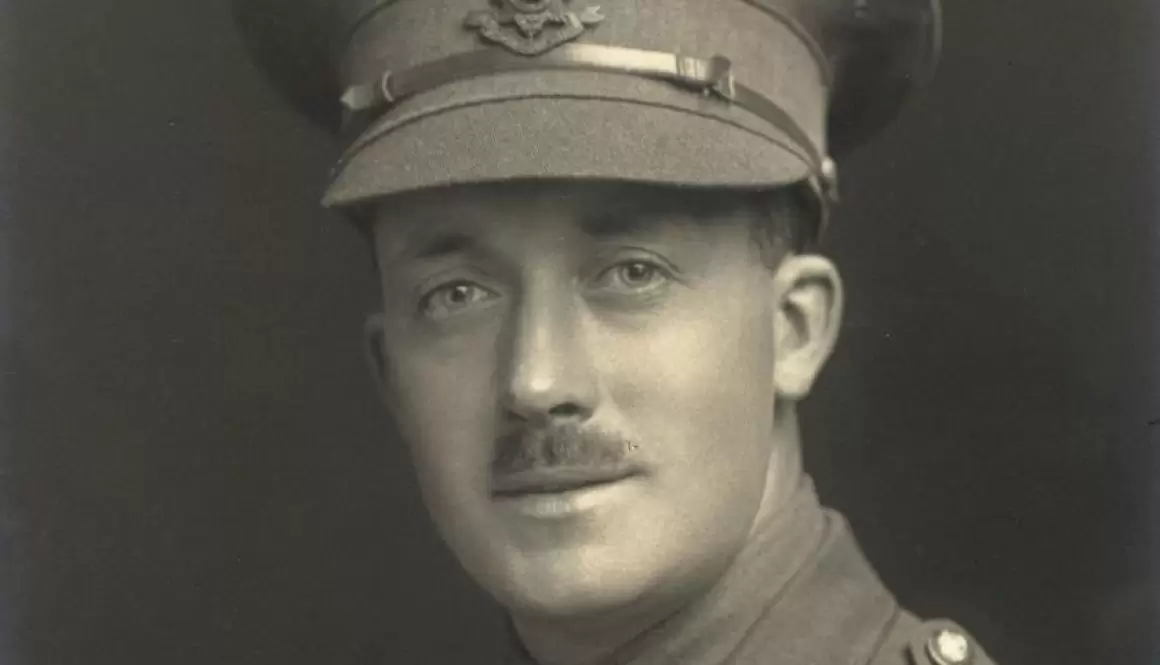George Thomson M.C. 1885-1973
George Thomson M.C. 1885-1973
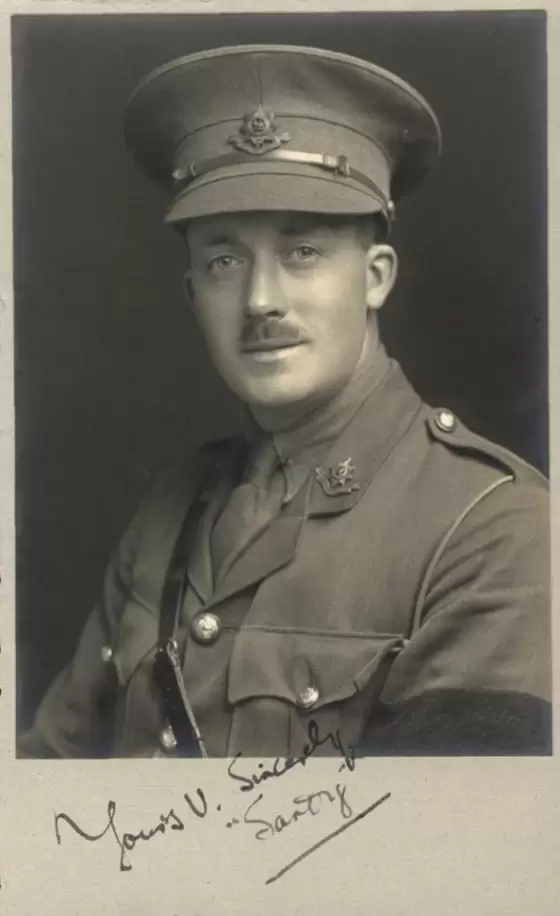
George Thomson M.C. 1885-1973
George Thomson was born at 32 Aird Tong, Isle of Lewis, Scotland on 25 September, 1885. His parents were Alexander Thomson and Janet “Jessie” Ferguson. Their story can be read here. He was the eleventh of thirteen children.
He attended the local school in Tong and he became a pupil teacher. This entailed attending school for two extra hours a day, one before and one after school, when he received tuition from the headmaster. He helped out in the classroom for the rest of the school day. George studied at home in the evenings for his Higher Leaving Certificate and only regretted that he had not been able to attend the Nicholson Institute in Stornoway as a pupil.
His was not the easiest route to university, but he was a clever lad and he got there, a little later than average. He was twenty one when he went up to the University of Glasgow in 1907 to study Latin and Mathematics and at that time his father was alive. He had a few changes of term-time address, perhaps a feature of studying in the city so far from the Hebrides. At the outset he lived c/o Macmillan, at 15 Hampden Street and lodged probably with the same family the following year at 11 Raeberry Street. In the session 1909-1910 he lived c/o Chapelle, at 53 Mount Street.
He seems to have applied himself well and he passed his degree exams in Latin and Mathematics in his first year, Logic, English and Education in his second year, Moral Philosophy and Celtic in his third year. He took first prize in Dr George Henderson’s Celtic class in 1910. George graduated MA on 10th June 1910. It was not the end of his studies, however. He came back in the session 1912-1913, this time to the Science Faculty, and enrolled for classes in Geology and Natural Philosophy. His plan was to teach.
I grew up knowing him as “Uncle George”, but he was actually my father’s uncle, so my great-uncle. When my father left Stornoway to attend Glasgow University, he lodged with his uncle in Muirend.
War Service
George Thomson went to war, enlisting first as a Private in the Royal Scots Fusiliers before being commissioned as a Lieutenant in the 11th Worcester Regiment. He fought at the Battle of Doiran in Macedonia in 1917, and was awarded the Military Cross (MC) for conspicuous gallantry and devotion to duty. The London Gazette of 24th July 1917 contains the citation,
‘He was wounded in the attack but, receiving first aid, rejoined his platoon and reorganised it under heavy fire. He only withdrew on being wounded a second time.’
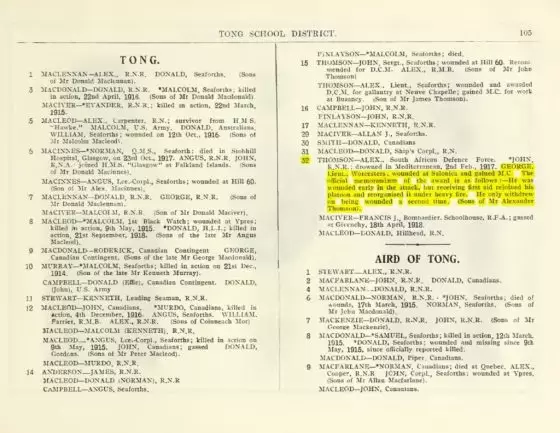
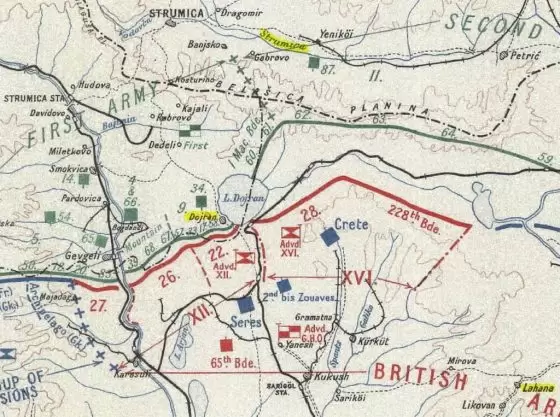
Battle of Doiran 1917
Between 1915 and 1918, British troops were part of a multi-national Allied force fighting against the Bulgarians and their allies in the Balkans. Although disease and the harsh conditions took a heavy toll, they eventually brought the campaign to a successful conclusion.
The British Salonika Force (BSF) covered 90 miles of front line including Doiran, where the British fought their two major battles of the campaign, and the wide Struma Valley, where small-scale operations were the norm and the effects of malaria were greatly felt.
The Salonika Front, approximately 250 miles, broadly followed the line of the border between Greece and North Macedonia. The line was established in 1915 by the allied forces in an attempt to protect Serbia against attacks from the combined Bulgarian, German and Austro-Hungarian forces.
The Battle of Doiran 1917
The second Battle of Doiran took place on 24-25 April 1917, and the Regimental History of the Worcestershire Regiment describes the action as follows.
Hardly had that reorganisation been completed when, shortly after 1.30 am, came a fresh storm of shells and a fresh onslaught from over the ridge. The enemy were determined to recapture their lost trench; they had paused only to collect their forces and to arrange a fresh barrage with their overwhehning artillery.
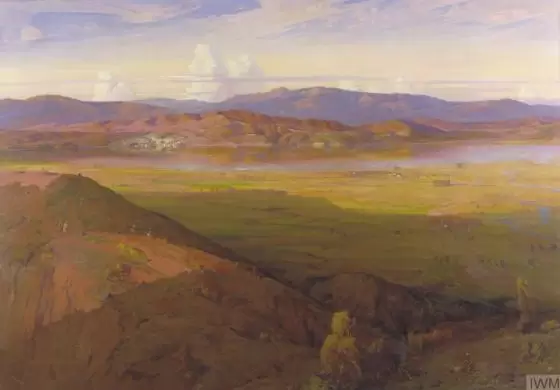
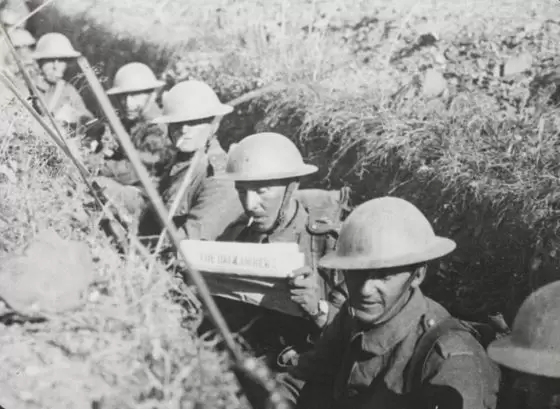
Injured at Doiran
That fresh barrage wrecked the defences of the shattered trench, and the new Bulgarian attack found the defenders with bombs exhausted and Lewis-guns mostly out of action. The platoons were now hopelessly intermingled, and in the darkness control was very difficult; nevertheless, inspired by the example of the wounded Lieutenant Thomson, the Worcestershire lads fought splendidly, beating off two more successive attacks. A big bomb struck one Lewis-gun, killing or wounding all its team. Bombs were striking all around, but 2nd Lieutenant F S Shaw, although already wounded, got to the Lewis-gun and brought it into action. He worked it single-handed, shooting down many of the enemy as they came charging forward and encouraging his men to fight to the last.
Military Cross
Lieutenant Thomson and 2nd Lieutenant Shaw were both awarded the Military Cross.
At that stage it was necessary to send back a message describing the position. Private J Auden volunteered to take the message, and set out down the slope into the barrage. He ran the gauntlet of the shells successfully, reached Battalion Headquarters, delivered his message and returned with the reply. On the way back he was struck and badly wounded; but he struggled on, delivered the answer, and remained in action till the end of the fight. He was subsequently awarded the Military Medal.
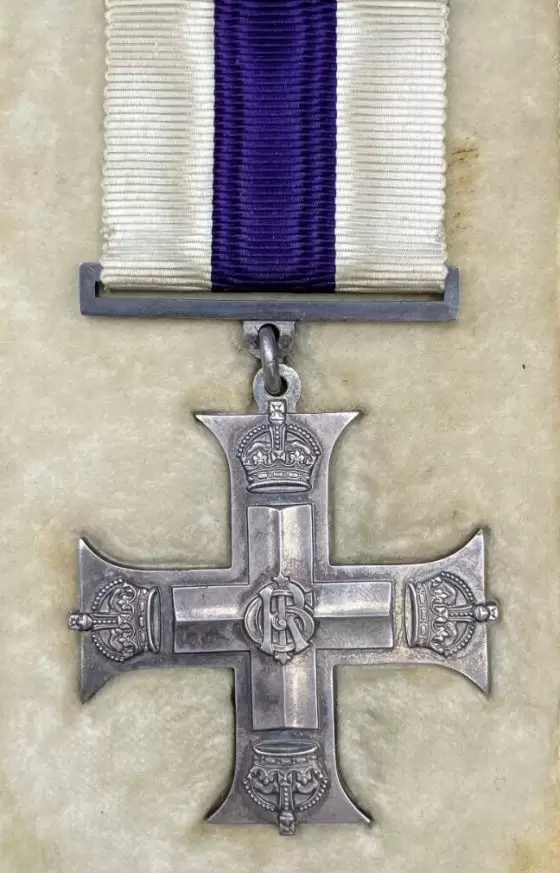

Newlands School
The war over, George returned to Glasgow to take up the teaching profession in which he had taken his first steps as a boy on Lewis. He taught in a few Glasgow schools before becoming a headmaster.
George married Helen MacOonald from Holm on 22 July 1920 at Burlington House, Glasgow, and they had one son and one daughter. Alasdair (1921-2000) was a navigating officer in the Merchant Navy and an Arts graduate of Glasgow. Marjorie (1924-2002) married Ian MacKenzie from Stornoway and lived in Saltcoats.
George Thomson finally retired from Newlands School after forty years in teaching. He was an enthusiastic member of the Lewis and Harris Association for over sixty years. He died in 1973 aged 88. His wife Helen died in 1966 aged 75.
Family Life
This photograph shows George and his wife Helen on the right. I don’t know the identities of the other members of the family
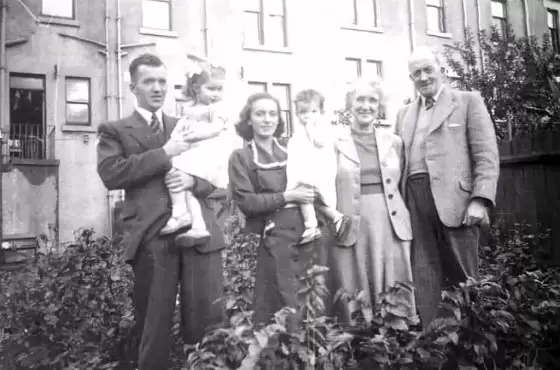
Retirement
This video was created from cine film taken by my father in 1955. It was filmed in the back garden of his house in Ormonde Drive, Muirend, Glasgow. The two children in the video are myself and my sister.
Acknowledgements
This page has been created from personal memories and family documents and photographs. Information about his war service was courtesy of the Regimental History of the Worcestershire Regiment. I have also drawn on the Glasgow University Roll of Honour and information provided by my sister Jennifer Tarry.
